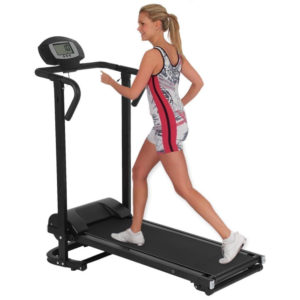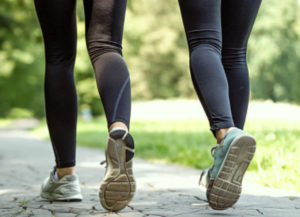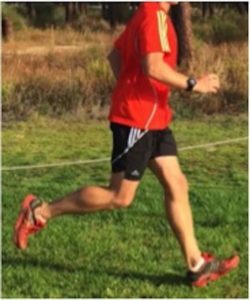Walking During COVID
With the COVID restrictions in place, and local gyms/facilities closed, people are walking outside. But are you getting the same workout that you would at your facility?
The answer is maybe, but likely not. Let’s look at the variables and data to make some sense of how to make outdoor walking to equal what you would do at the gym. Mentally, walking outside has psychological benefits, yet how you adjust the variables determines if you gain physical benefits and changes.
First, energy expenditure is based upon horizontal and vertical distance traveled. Go to Washington Park in Denver, the 2.5-mile loop is relatively flat, so you don’t get the extra benefit of walking up a hill. In general, when you add 1/10 of mph, that is going to have only 10-20% of the effect of adding a percent to the grade. The average person walking for 45 minutes for 3 miles at a flat will probably expend 300-375 kcal. Add 6% grade to the equation, and that number jumps to 550-594 kcal. That is quite a bit of difference with just a little bit of grade. Hills win from an energy expenditure perspective. So, if you were walking outdoors, you will either have to go faster or find/simulate hills to equal your gym workout.
Ideally, all forms of exercise should combine for an total expenditure of around 4,000 kcal per week. For most people a vigorous workout at the gym counts for 500 kcal per session. So, five days per week and you have quite a bit covered (2500 kcal). Combine with walking around the house or office more, and you can hit that 4K goal. This is the goal metric where health, fitness and weight maintenance combine.
As you get older, comfortable walking speed declines, which impacts energy burned. At age 30, it was probably 3.4 mph; at age 60, it is 2.6 mph. Most people are walking as couples or families, and that tends to take the speed down another notch or two. Since the goal is 30 minutes of walking per day according to the popular press is what many people are doing, they probably are not going fast enough as well as not long enough.

Another set of factors is muscle strength and the condition of your joints. The less power you have, especially in the legs, the more you slow down during your walk. Simply put, you can’t brake effectively in the de-acceleration phase when you land. The same is true for bad joints, whether it be knees, hips, or feet. People notice the joint (S) and do slow down accordingly.

The exercise bottom line is relatively simple. 30 minutes of walking is not going to be near as good as 30 minutes of treadmill walking at a grade.
Walking for 30 minutes is better than nothing. But don’t be fooled into thinking this is the same as 45 minutes of “cardio” at a brisk pace at your former facility. Add time or add grade to get closer to what you need!
References
Cunha FA, Catalão RP, Midgley AW, Gurgel J, Porto F, Farinatti PT. Do the speeds defined by the American College of Sports Medicine metabolic equation for running produce target energy expenditures during isocaloric exercise bouts?. Eur J Appl Physiol. 2012;112(8):3019–3026.
Fellingham GW, Roundy ES, Fisher AG, Bryce GR. Caloric cost of walking and running. Med Sci Sports. 1978;10(2):132–136.
Franz JR, Kram R. The effects of grade and speed on leg muscle activations during walking. Gait Posture. 2012;35(1):143–147.
Hall C, Figueroa A, Fernhall B, Kanaley JA. Energy expenditure of walking and running: comparison with prediction equations. Med Sci Sports Exerc. 2004;36(12):2128–2134.
Horiuchi M, Endo J, Horiuchi Y, Abe D. Comparisons of energy cost and economical walking speed at various gradients in healthy, active younger and older adults. J Exerc Sci Fit. 2015;13(2):79–85.
Lam YY, Ravussin E. Analysis of energy metabolism in humans: A review of methodologies. Mol Metab. 2016;5(11):1057–1071.
Miller JF, Stamford BA. Intensity and energy cost of weighted walking vs. running for men and women. J Appl Physiol (1985). 1987;62(4):1497–1501.
Minetti AE, Moia C, Roi GS, Susta D, Ferretti G. Energy cost of walking and running at extreme uphill and downhill slopes. J Appl Physiol (1985). 2002;93(3):1039–1046.
Nagano, H., James, L., Sparrow, W.A. et al. Effects of walking-induced fatigue on gait function and tripping risks in older adults. J NeuroEngineering Rehabil 2014:(11), 155.
Roberts D, Hillstrom H, Kim JH. Instantaneous Metabolic Cost of Walking: Joint-Space Dynamic Model with Subject-Specific Heat Rate. PLoS One. 2016;11(12).
PS, walking the dog is barely good exercise for the dog. Don’t be fooled into thinking that qualifies as “cardio” exercise for you!

